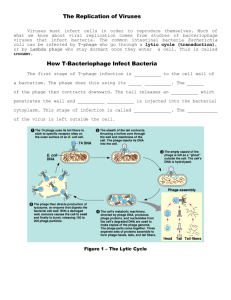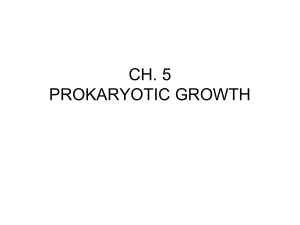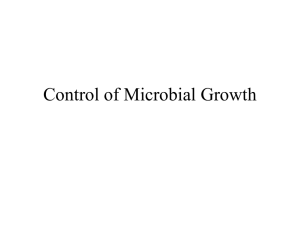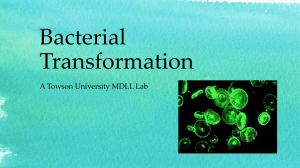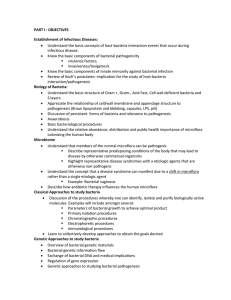Study Guide – Bacteria, Archaea, and Viruses Key Terms: Microflora
advertisement
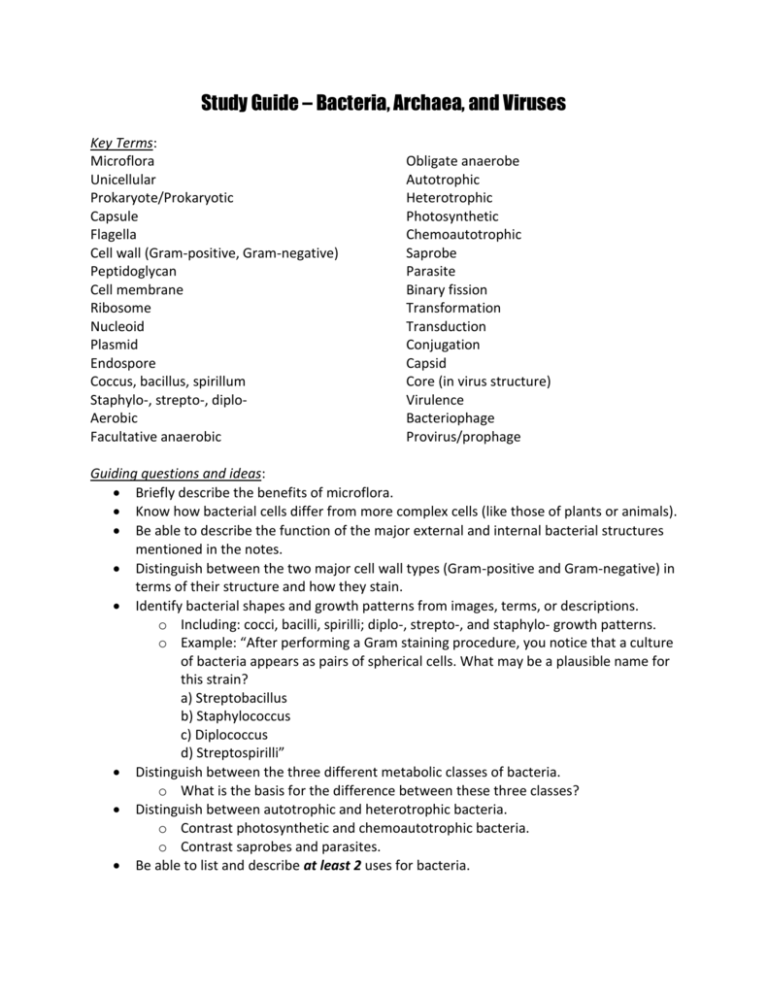
Study Guide – Bacteria, Archaea, and Viruses Key Terms: Microflora Unicellular Prokaryote/Prokaryotic Capsule Flagella Cell wall (Gram-positive, Gram-negative) Peptidoglycan Cell membrane Ribosome Nucleoid Plasmid Endospore Coccus, bacillus, spirillum Staphylo-, strepto-, diploAerobic Facultative anaerobic Obligate anaerobe Autotrophic Heterotrophic Photosynthetic Chemoautotrophic Saprobe Parasite Binary fission Transformation Transduction Conjugation Capsid Core (in virus structure) Virulence Bacteriophage Provirus/prophage Guiding questions and ideas: Briefly describe the benefits of microflora. Know how bacterial cells differ from more complex cells (like those of plants or animals). Be able to describe the function of the major external and internal bacterial structures mentioned in the notes. Distinguish between the two major cell wall types (Gram-positive and Gram-negative) in terms of their structure and how they stain. Identify bacterial shapes and growth patterns from images, terms, or descriptions. o Including: cocci, bacilli, spirilli; diplo-, strepto-, and staphylo- growth patterns. o Example: “After performing a Gram staining procedure, you notice that a culture of bacteria appears as pairs of spherical cells. What may be a plausible name for this strain? a) Streptobacillus b) Staphylococcus c) Diplococcus d) Streptospirilli” Distinguish between the three different metabolic classes of bacteria. o What is the basis for the difference between these three classes? Distinguish between autotrophic and heterotrophic bacteria. o Contrast photosynthetic and chemoautotrophic bacteria. o Contrast saprobes and parasites. Be able to list and describe at least 2 uses for bacteria. Understand and describe what’s happening in a typical bacterial growth curve. Describe and distinguish between the three types of bacterial sexual reproduction. Explain, briefly, how viruses transfer DNA during transduction. What are the major differences between bacteria and archaebacteria? Describe the characteristics of the three main types of archaebacteria. What are the major structural features of all viruses? What are the three main types of viruses? In general, what is the process by which a virus reproduces? Describe the lytic and lysogenic cycles of viral replication. How do they differ, and how are they similar?



